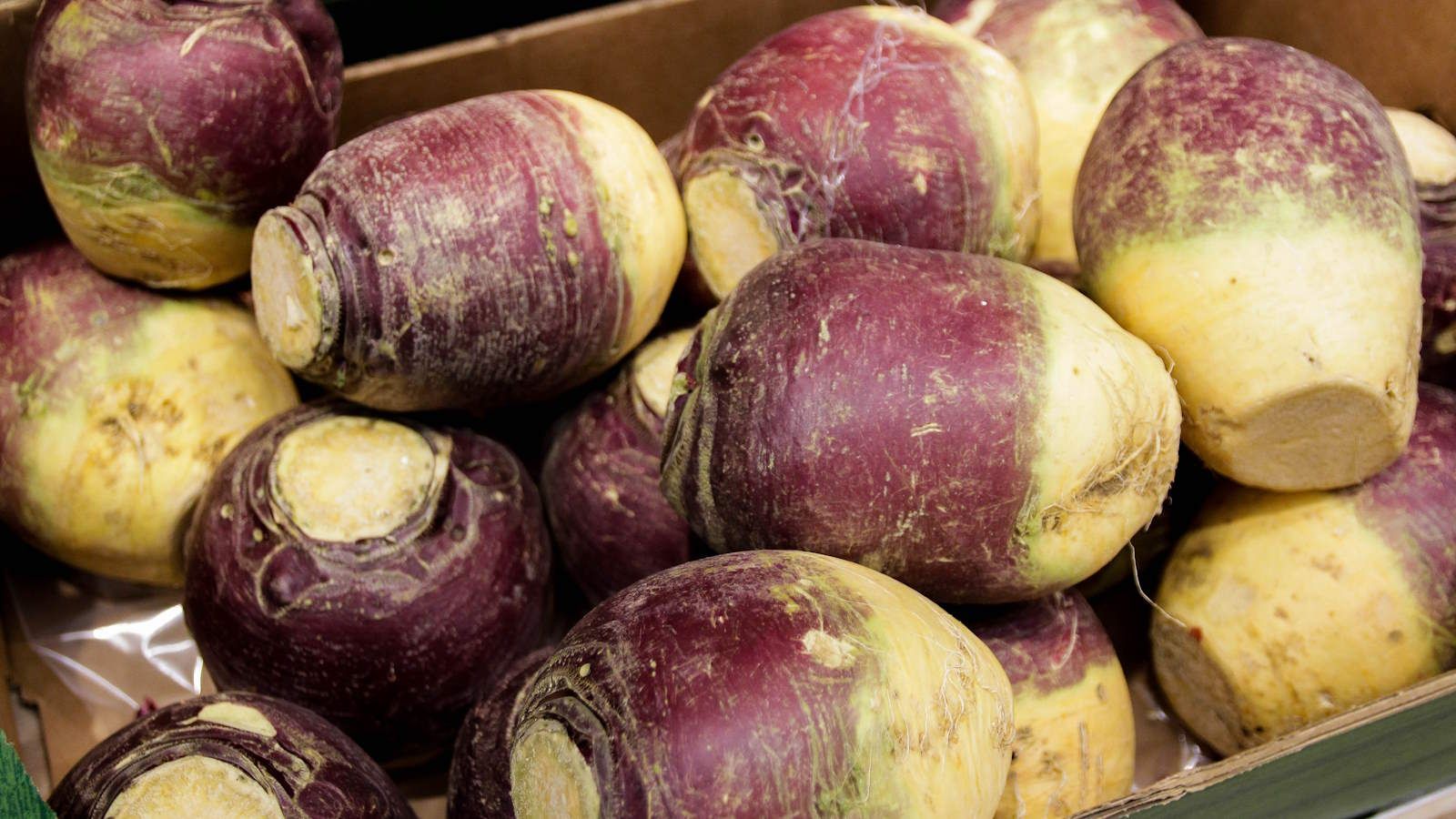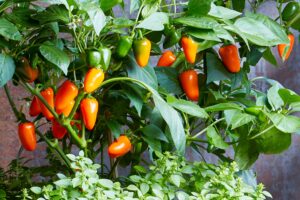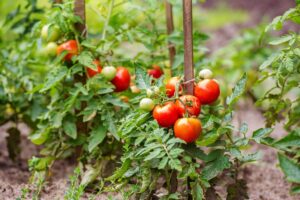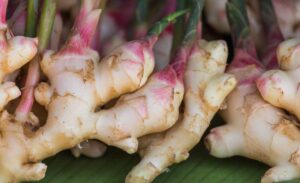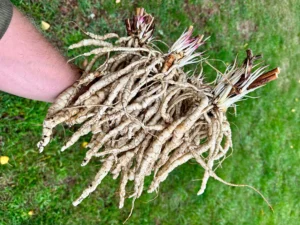How to Grow Rutabaga: A Complete Guide
Rutabagas (Brassica napus) are versatile root vegetables that offer impressive nutritional benefits and culinary versatility. Often overlooked in the American garden, these hardy vegetables deserve a prominent place in your growing space. Whether you have acres of land or just a sunny windowsill, you can successfully grow these delicious root vegetables with the right approach. This guide will walk you through everything you need to know about growing rutabagas in various settings across the United States.
What is Rutabaga?
Rutabagas are a cross between turnips and cabbage, resulting in a nutritious root vegetable with yellow flesh and a mild, slightly sweet flavor. They’re larger than turnips and have a purplish-yellowish skin. Popular in Northern European cuisine, rutabagas are gaining traction in the US market as more Americans discover their versatility and nutritional benefits.
According to the USDA Agricultural Research Service, rutabagas are excellent sources of vitamin C, potassium, and fiber while being low in calories. This nutritional profile makes them increasingly popular among health-conscious consumers in the US market.
When to Plant Rutabaga
Timing is crucial for successful rutabaga cultivation. These cool-weather crops perform best when temperatures range between 60-65°F (15-18°C).
Planting Calendar for Different US Regions
| Region | Spring Planting | Fall Planting | Days to Maturity |
|---|---|---|---|
| Northeast | April-May | July-August | 90-100 days |
| Midwest | March-April | July-August | 90-100 days |
| South | February-March | August-September | 80-90 days |
| Southwest | February-March | September-October | 80-90 days |
| Pacific Northwest | March-April | July-August | 90-110 days |
| Alaska | Late May-June | Not recommended | 110-120 days |
Fall harvests typically produce sweeter, more flavorful rutabagas as the cool weather enhances sugar development in the roots. According to the USDA Plant Hardiness Zone Map, rutabagas can tolerate light frosts, making them excellent options for extended-season growing.
How to Grow Rutabaga in Your Garden
Growing rutabagas in a garden setting provides optimal conditions for these root vegetables to thrive. Here’s your step-by-step guide to garden cultivation:

Soil Preparation
Rutabagas prefer well-draining, fertile soil with a pH between 6.0 and 7.0. Before planting:
- Test your soil using a home testing kit or through your local extension service.
- Amend heavy clay soils with compost to improve drainage.
- Add aged compost or well-rotted manure to boost fertility.
- Remove rocks and large debris that might impede root development.
The USDA Natural Resources Conservation Service recommends avoiding fresh manure, which can introduce pathogens and cause forking in root vegetables like rutabagas.
Direct Seeding Method
Rutabagas grow best when directly seeded into the garden:
- Create furrows about ½ inch deep.
- Space rows 18-24 inches apart.
- Sow seeds thinly, about 1 inch apart.
- Cover lightly with soil and water gently.
- Once seedlings reach 2-3 inches tall, thin to 6-8 inches apart.
Save the thinned seedlings—they make excellent additions to salads with a mild, peppery flavor similar to mature rutabaga but more delicate.
Watering and Care
Consistent moisture is critical for developing sweet, tender rutabagas:
- Provide 1-1.5 inches of water weekly.
- Use drip irrigation or soaker hoses to maintain even soil moisture.
- Apply 2-3 inches of organic mulch around plants to retain moisture and suppress weeds.
- Hill soil around the shoulders of developing roots to prevent them from turning green and bitter.
Growing Rutabaga in Containers
Don’t have garden space? No problem! Rutabagas can thrive in containers with proper care:
Container Selection
Choose the right container for successful growth:
- Select containers at least 12 inches deep and 12 inches in diameter.
- Ensure adequate drainage holes.
- Use fabric grow bags or food-grade plastic containers for best results.
Potting Medium
Standard potting soil won’t provide the nutrition rutabagas need. Create a custom mix:
- Combine 60% high-quality potting soil, 20% compost, and 20% coarse sand or perlite.
- Add slow-release organic fertilizer according to package directions.
- Moisten the mixture before filling containers.
Container Growing Tips
- Place containers where they receive 6+ hours of sunlight daily.
- Water more frequently than garden plants—container soil dries faster.
- Rotate containers regularly to ensure even growth.
- Harvest when roots reach 3-4 inches in diameter for container-grown rutabagas.
Growing Rutabaga Indoors
Yes, you can grow rutabagas indoors with the right setup! While they won’t reach the same size as outdoor-grown specimens, indoor rutabagas still provide delicious harvests:
Light Requirements
Rutabagas need substantial light when grown indoors:
- Position near south-facing windows for natural light.
- Supplement with full-spectrum grow lights positioned 6-12 inches above plants.
- Provide 12-14 hours of light daily.
Indoor Growing Environment
Create the right conditions for success:
- Maintain temperatures between 60-70°F (15-21°C).
- Use a small fan for air circulation to prevent disease.
- Maintain 40-60% humidity—use a humidifier if indoor air is dry.
- Hand-pollinate flowers if you plan to save seeds.
Common Problems and Solutions
Like all vegetables, rutabagas face certain challenges. Here’s how to address common issues:
Pest Management
| Pest | Symptoms | Organic Control Methods |
|---|---|---|
| Cabbage root maggot | Wilting, yellowing leaves; tunnels in roots | Row covers; beneficial nematodes; diatomaceous earth |
| Flea beetles | Small holes in leaves | Row covers; sticky traps; neem oil spray |
| Aphids | Curled leaves; sticky residue | Strong water spray; insecticidal soap; ladybugs |
| Slugs | Irregular holes in leaves and roots | Diatomaceous earth; beer traps; copper tape |
The USDA Integrated Pest Management Program encourages using cultural and biological controls before reaching for chemicals.

Disease Prevention
Prevent common rutabaga diseases with these strategies:
- Practice crop rotation—don’t plant rutabagas where other brassicas grew within the past 3 years.
- Choose disease-resistant varieties when available.
- Maintain proper plant spacing for good air circulation.
- Water at the soil level rather than overhead.
- Remove and destroy infected plant material immediately.
Harvesting and Storage
Knowing when and how to harvest ensures the best flavor and longest storage life for your rutabagas.
When to Harvest
Harvest rutabagas when:
- Roots reach 3-5 inches in diameter.
- Foliage begins to yellow slightly.
- After a light frost has sweetened the flavor.
- Before the ground freezes in cold regions.
Harvesting Technique
- Loosen soil around plants with a garden fork.
- Gently lift roots from the soil, avoiding damage.
- Trim tops to 1 inch above the root.
- Brush off excess soil (but don’t wash if storing).
Storage Methods
According to the USDA Food Safety and Inspection Service, properly stored rutabagas can last 2-4 months. Here’s how:
- Store unwashed rutabagas in a cool (32-40°F), humid location like a root cellar.
- Layer in damp sand or sawdust in crates for longest storage.
- For refrigerator storage, wrap in perforated plastic bags and store up to 2 weeks.
- For freezing, blanch cubed rutabaga for 2 minutes, cool rapidly, pack in freezer containers, and store up to 10 months.
Cooking with Rutabaga
After growing your perfect rutabagas, here are delicious ways to enjoy them:
- Roast with olive oil, rosemary, and garlic for a caramelized side dish
- Mash with butter and cream as an alternative to potatoes
- Add to soups and stews for earthy sweetness
- Grate raw into slaws and salads
- Slice thinly and bake as low-carb chips
Best Rutabaga Varieties for US Growers
Choose the right variety for your growing conditions:
- American Purple Top: The most common US variety; purple shoulders with yellow flesh; excellent storage properties.
- Laurentian: Canadian variety gaining popularity in northern US; sweet flavor and excellent cold tolerance.
- Joan: Early-maturing variety; ready in 80-90 days; good disease resistance.
- Helenor: Uniform, round roots; exceptional flavor; holds well in the field.
- Nadmorska: Polish variety with high yield potential; excellent for commercial production.

The US Rutabaga Market
While still a niche crop, rutabaga demand is growing in the United States. According to the USDA Economic Research Service, specialty root vegetables like rutabagas are seeing increased consumer interest due to:
- Rising interest in historical and heritage foods
- Expanded focus on nutritional density in diets
- Growing popularity of farm-to-table and local food movements
- Increased exposure through cooking shows and food media
For market gardeners, rutabagas offer excellent profit potential due to their relatively low production costs, good storage capabilities, and premium pricing compared to more common vegetables.
Conclusion
Growing rutabagas rewards you with nutritious, versatile vegetables that thrive in diverse growing environments. Whether you’re cultivating them in a spacious garden, compact containers, or even indoors, these resilient root vegetables offer excellent returns on your gardening efforts. With proper timing, care, and harvest techniques, you’ll enjoy delicious homegrown rutabagas that far surpass anything available in stores.
By incorporating these growing techniques into your gardening practice, you’ll join a growing community of US gardeners rediscovering this traditional crop. Start your rutabaga-growing journey today and experience the satisfaction of harvesting these nutritious roots from your own growing space!
